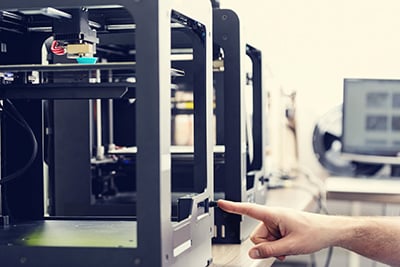 Surgeons at a New York hospital teamed up with charity Matthew’s Hearts of Hope to create a 3D printed plastic replica of a baby’s heart earlier this month. According to an article published in The Independent today, MRI data was used to print the baby’s heart, “which was both riddled with holes and structured unusually.” By practicing surgery on the replica, the number of surgeries the baby had to undergo was reduced from several to just one.
Surgeons at a New York hospital teamed up with charity Matthew’s Hearts of Hope to create a 3D printed plastic replica of a baby’s heart earlier this month. According to an article published in The Independent today, MRI data was used to print the baby’s heart, “which was both riddled with holes and structured unusually.” By practicing surgery on the replica, the number of surgeries the baby had to undergo was reduced from several to just one.
Emile Bacha, MD, Chief, Division of Cardiothoracic Surgery, NewYork-Presbyterian/Columbia, and Director, Congenital and Pediatric Cardiac Surgery, NewYork-Presbyterian/Morgan Stanley Children’s Hospital was the head of the team that performed the surgery on the 2-week old. “With this technology … we are able to actually look at the heart in advance and plan our surgery, and we can actually even cut those models and look inside the heart so that we can actually know beforehand, have an idea of what we’re going to do,” Bacha told CNBC.
3D printing has exploded onto the scene with major medical application in several areas. According to an article on Bustle.com, another heart surgery performed last week in Kentucky was also assisted by 3D printing a plastic heart. “By using a Makerbot printer, he created a replica of his young patient’s heart in three parts, which allowed him to fully understand the organ before ever putting on his surgical gear,” the article says. But hearts aren’t the only medical application for which 3D printing is applicable. A bionic ear was successfully printed using hydrogel, and scientists are currently working on the technology to print stem cells.
Prospector’s plastics materials search includes data on a wide variety of medical plastic materials, as well as plastics for 3D printing applications.
Are you involved in 3D printing or do you have specialized knowledge on 3D printing for medical purposes? We’d love to hear from you in the comments below.
The views, opinions and technical analyses presented here are those of the author or advertiser, and are not necessarily those of ULProspector.com or UL Solutions. The appearance of this content in the UL Prospector Knowledge Center does not constitute an endorsement by UL Solutions or its affiliates.
All content is subject to copyright and may not be reproduced without prior authorization from UL Solutions or the content author.
The content has been made available for informational and educational purposes only. While the editors of this site may verify the accuracy of its content from time to time, we assume no responsibility for errors made by the author, editorial staff or any other contributor.
UL Solutions does not make any representations or warranties with respect to the accuracy, applicability, fitness or completeness of the content. UL Solutions does not warrant the performance, effectiveness or applicability of sites listed or linked to in any content.



Leave a Reply or Comment